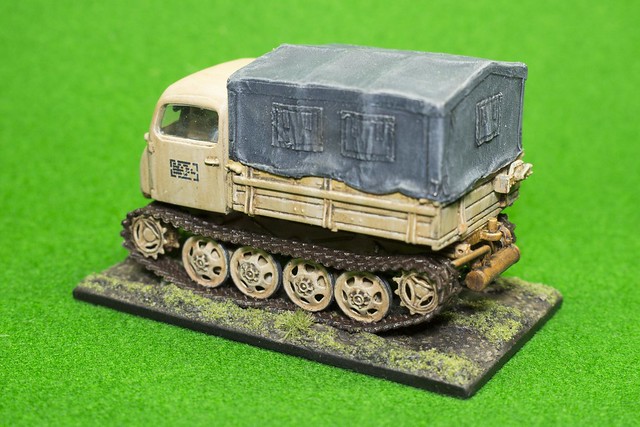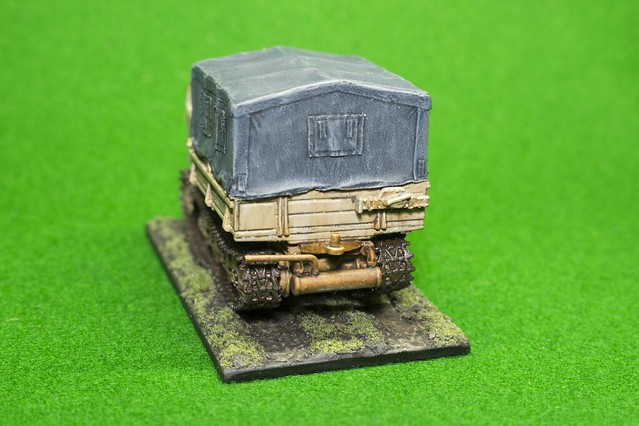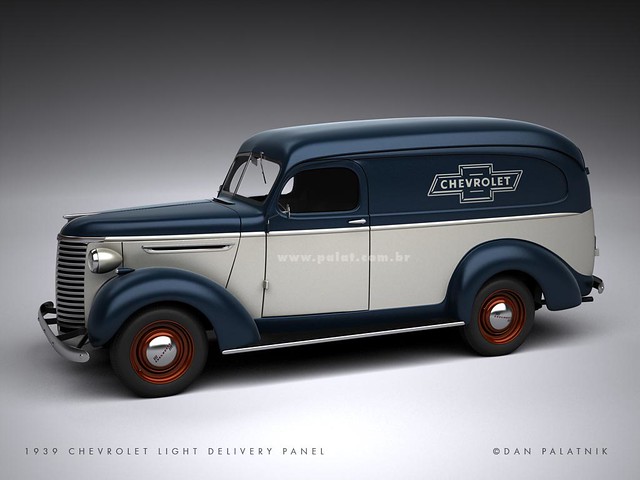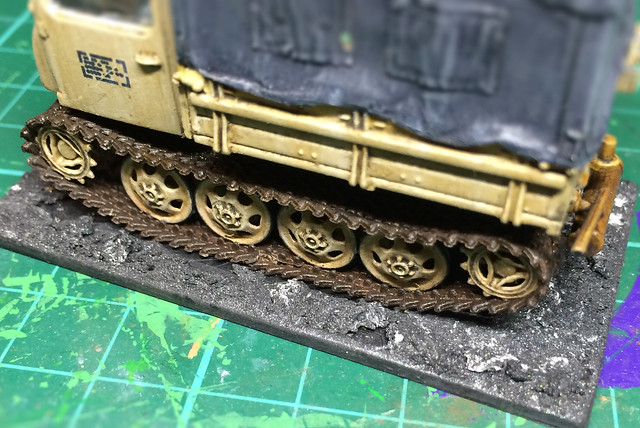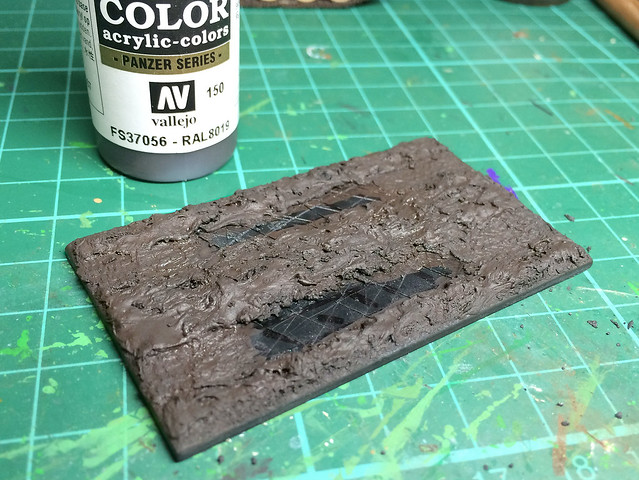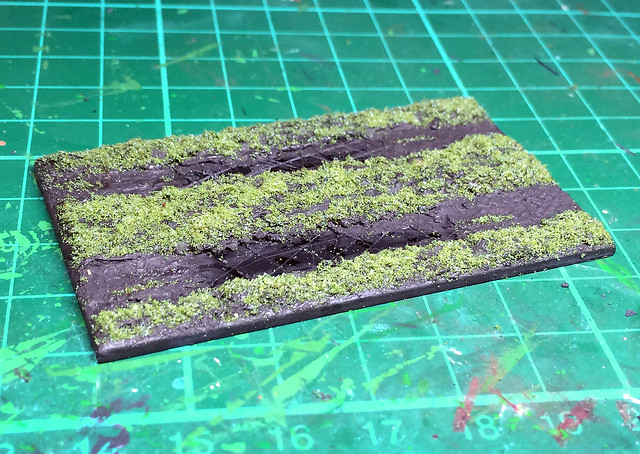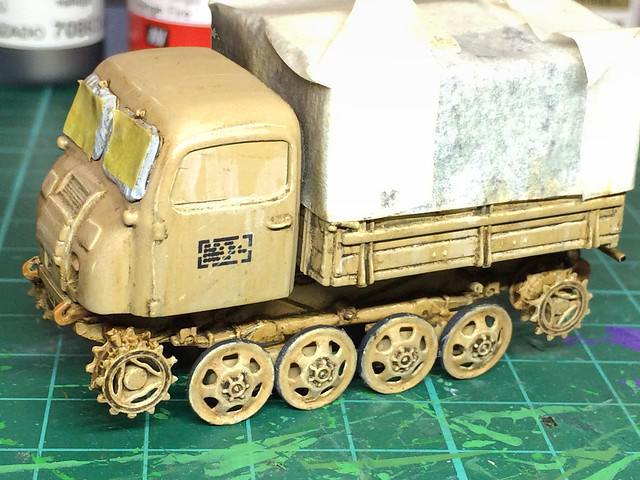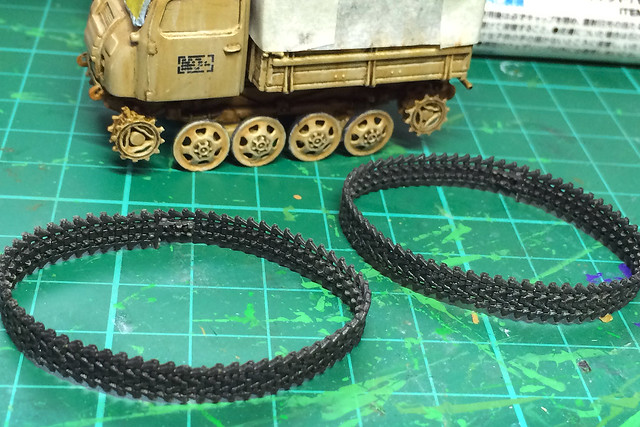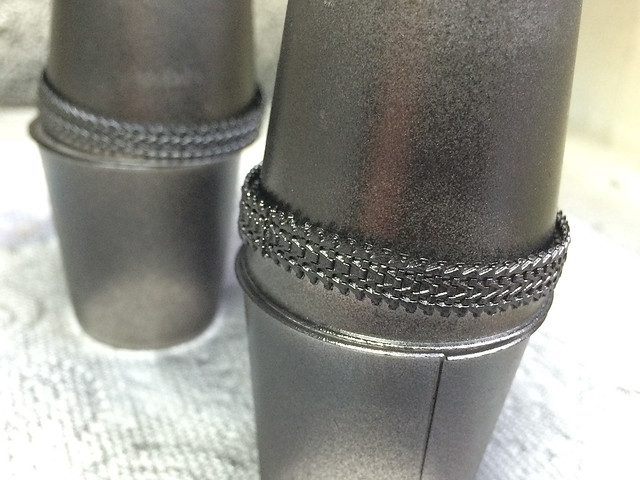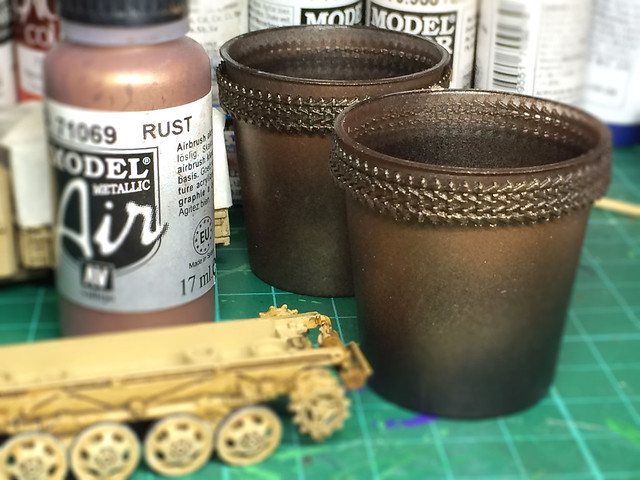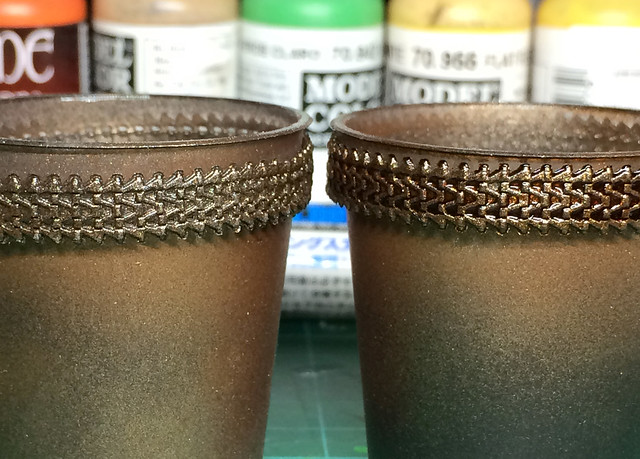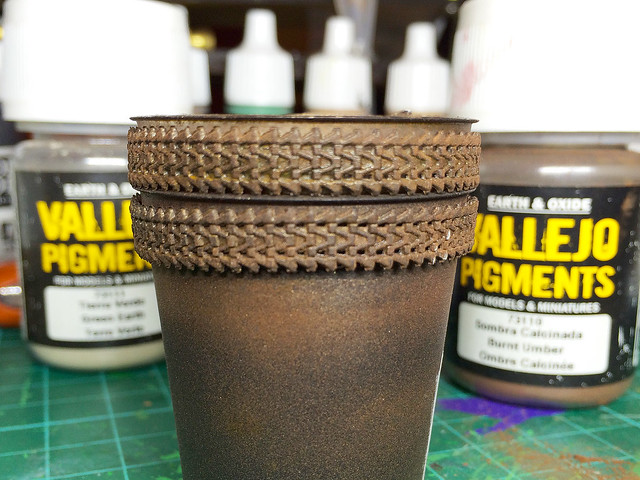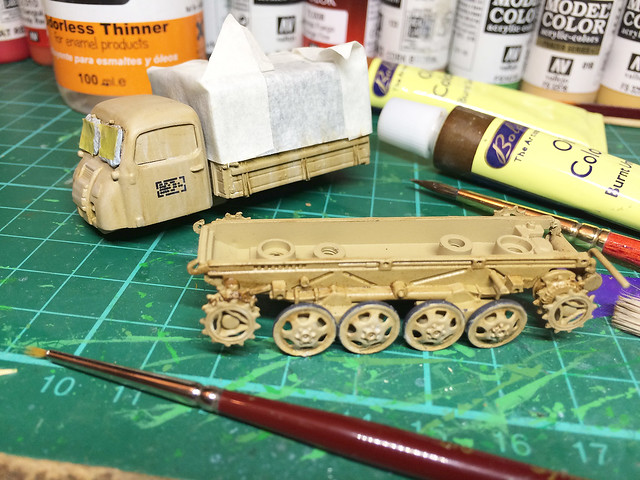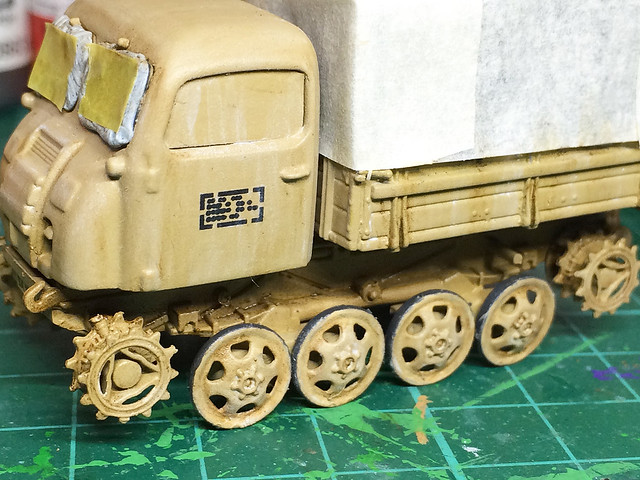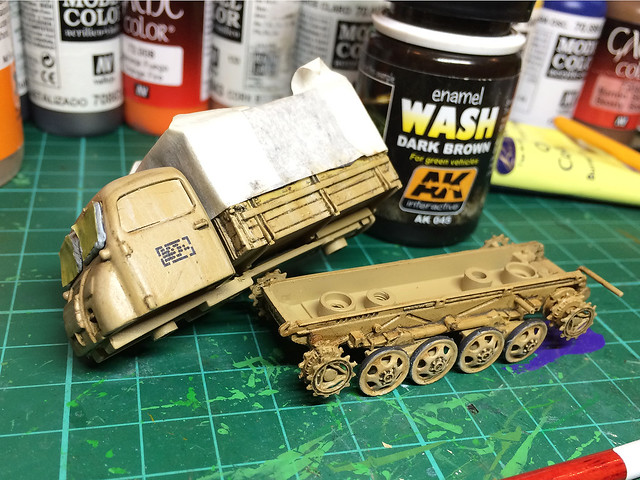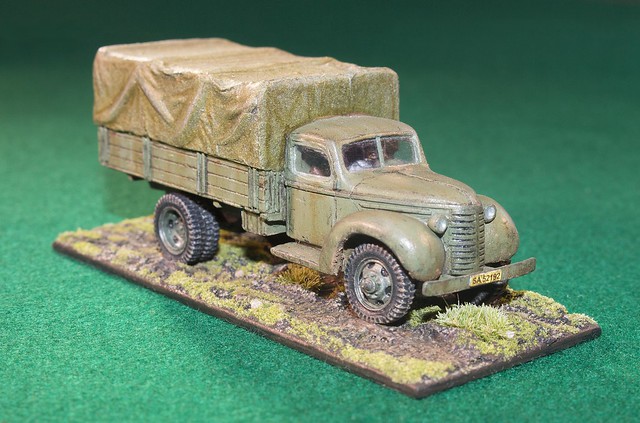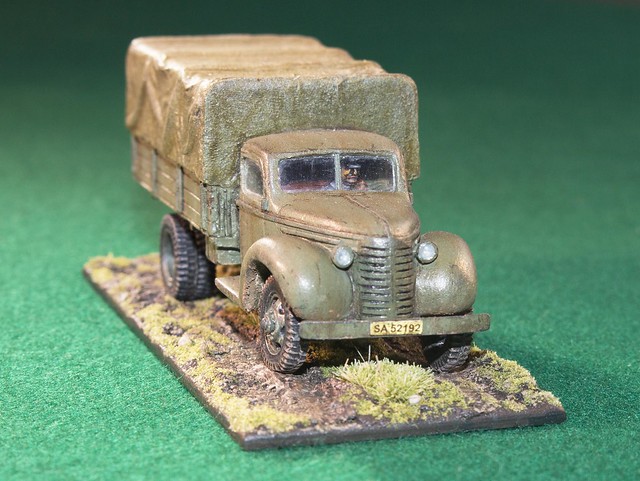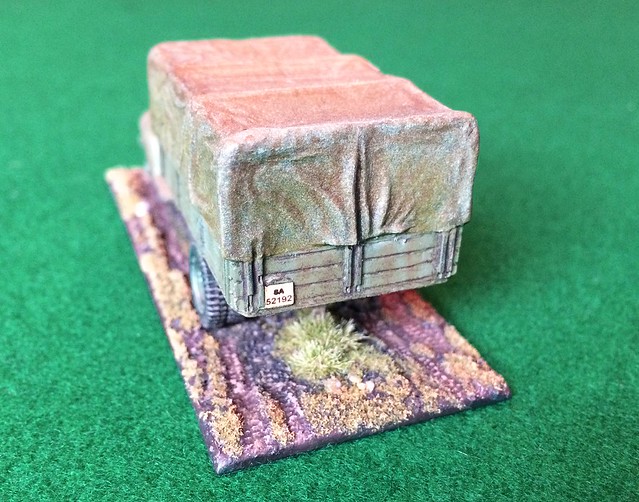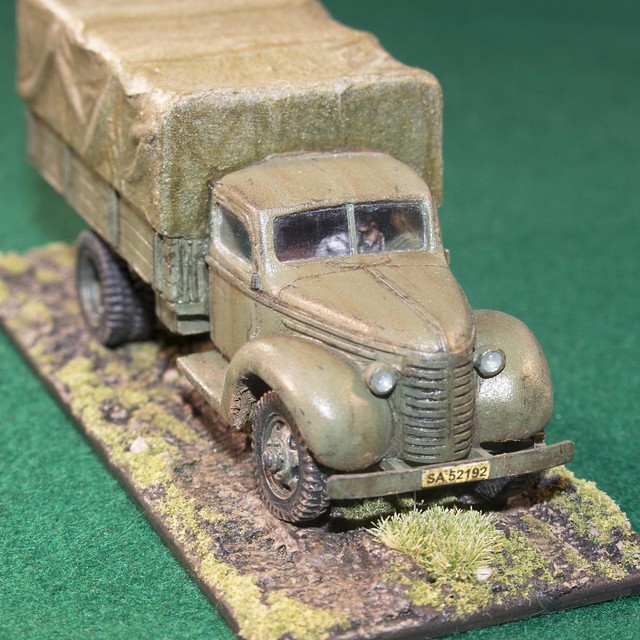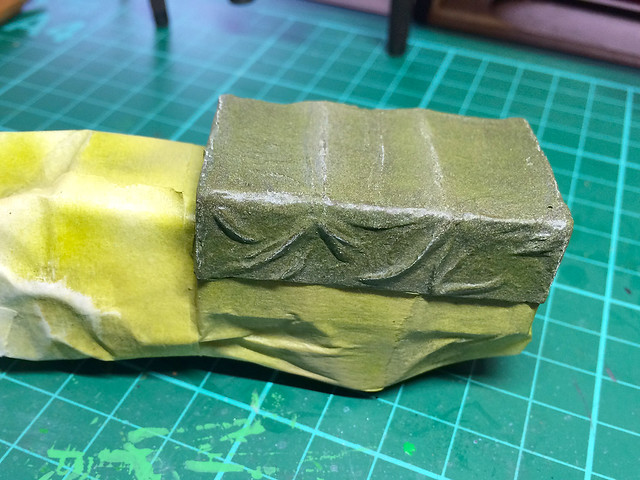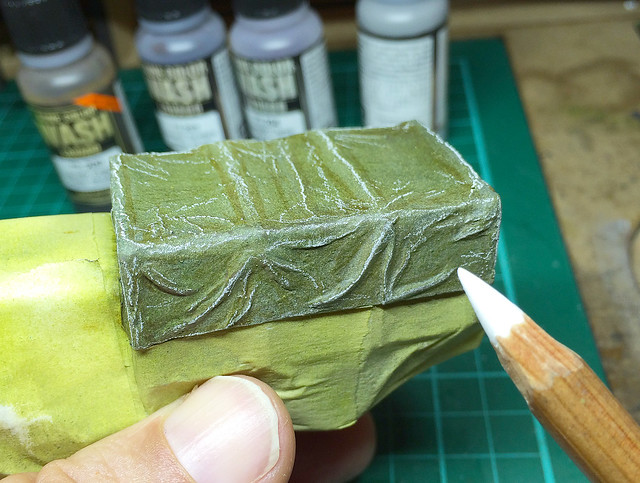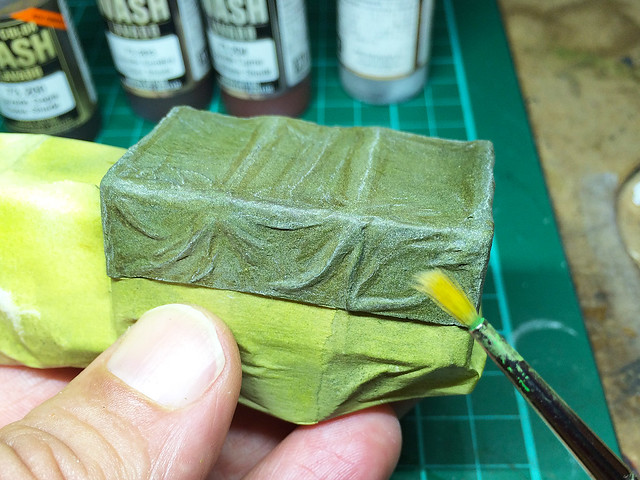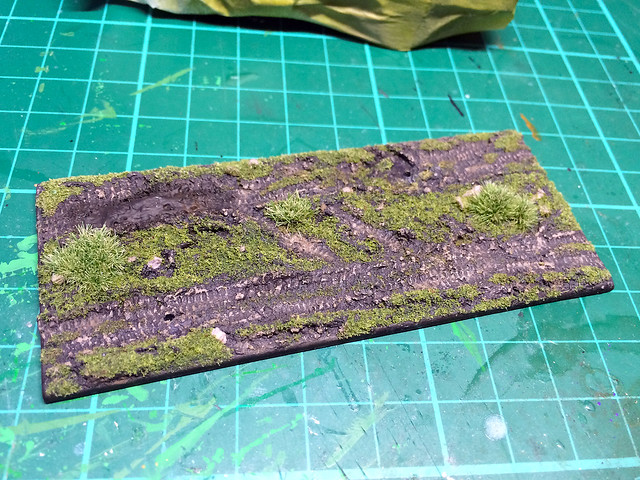Altaya 1/72 Raupenschlepper (RSO) Prime Mover
The Finnish Army purchased 53 vehicles from the Germans which were delivered in 1944. They were procured as artillery prime movers, being capable of towing both 7.5cm Pak 40 and the 10.5cm leFH 18 Light Field Howitzer which they also bought from the Germans (though there is photo reference of a Finnish RSO towing a captured Soviet 122mm gun).
Diary of a novice scale model maker and his adventures in the wacky world of Braille Scale.
Friday 30 October 2015
Thursday 29 October 2015
What next? Chevy radio van?
Despite the fact I really fancied getting back to good old plastic kit making - and I do have a couple of suitable kits for my Finnish Continuation War project - a little model I already had has been niggling me. I bought it as a possible basis for my 1939 Chevy truck project - but in the end did a semi-scratch build.
So, i've had this nice little truck laying around - it's a 1/72 Valiant 'Ready to Roll' resin model of a 1939 Chevrolet 30cwt LRDG truck...
As nice as this little truck is I don't really have any use for it now so I was wondering if I could use it in my Finnish project somehow. And as luck would have it I came across this photo on the SA-Kuva.fi (WW2 Finnish military history) photo resource...
The red arrow in the above photo points to a 1939 Chevrolet panel van. This is most likely - as was common Finnish Army practise at the time - a civilian vehicle pressed into military service. I did a bit of Googling and found out what this van looked like...
It's a very attractive light van and I don't think would be difficult to convert my LRDG truck into something like it. I will have to build up the 'panel van' back end onto the Chevy truck's rear chassis.
However, I also found an alternative version of the Chevy panel van which would be far easier to make a conversion of...
It's not as pretty as the factory made panel van but might be more appropriate for my intended use as a make-shift radio car for my Finns. (I actually quite like the improvised nature of the third-party conversion, though I won't be replicating the paint job!)
Historically, aside from the fact that Chevrolets - of various makes and sizes - were very popular pre-war imports into Finland, I can't be sure whether they were in fact used as radio cars by the Finns. The ad-hoc nature of Finland's impressing civilian vehicles into it's army means that perhaps no-one really knows for sure what strange and unusual models were press-ganged into use.
I have trawled through the SA-Kuva photo archive and radio cars hardly feature at all - perhaps one or two civilian sedans, but only one specialist vehicle (a German military van purchased by the Finns). So I am going to use some 'artistic licence'.
Next: Rebuilding the Chevy's cab and working out how to make the van back-end.
So, i've had this nice little truck laying around - it's a 1/72 Valiant 'Ready to Roll' resin model of a 1939 Chevrolet 30cwt LRDG truck...
As nice as this little truck is I don't really have any use for it now so I was wondering if I could use it in my Finnish project somehow. And as luck would have it I came across this photo on the SA-Kuva.fi (WW2 Finnish military history) photo resource...
 |
| Finnish Army photo, 1941. Source: SA-Kuva |
It's a very attractive light van and I don't think would be difficult to convert my LRDG truck into something like it. I will have to build up the 'panel van' back end onto the Chevy truck's rear chassis.
However, I also found an alternative version of the Chevy panel van which would be far easier to make a conversion of...
It's not as pretty as the factory made panel van but might be more appropriate for my intended use as a make-shift radio car for my Finns. (I actually quite like the improvised nature of the third-party conversion, though I won't be replicating the paint job!)
Historically, aside from the fact that Chevrolets - of various makes and sizes - were very popular pre-war imports into Finland, I can't be sure whether they were in fact used as radio cars by the Finns. The ad-hoc nature of Finland's impressing civilian vehicles into it's army means that perhaps no-one really knows for sure what strange and unusual models were press-ganged into use.
I have trawled through the SA-Kuva photo archive and radio cars hardly feature at all - perhaps one or two civilian sedans, but only one specialist vehicle (a German military van purchased by the Finns). So I am going to use some 'artistic licence'.
Next: Rebuilding the Chevy's cab and working out how to make the van back-end.
Wednesday 28 October 2015
1/72 Steyr RSO - The last leg
The last touches to the vehicle body are just some 'cosmetics' - the addition of some dirty and mud to the underside...
Having finished the underside I can now add the tracks. in doing this I have to use some strategically placed spots of superglue in order to give the impression of realistic track droop...
This all worked out OK, I suppose, but the vinyl tracks deform very easily and I hate the obvious join. Still, I guess this is one of the downsides of die-cast models compared to quality plastic kits.
And lastly...
Making the model base
Well, you know the routine by now, although this base will be slightly different because of the tracks (rather than the usual wheels). So it will be interesting to see how this will work out.
I begin with the usual rectangle of black plastic sheet, cut down to give a 5mm border all round the circumference of the vehicle to be mounted. I then start daubing on some Polyfilla, which has been coloured black by adding some acrylic paint, to represent a muddy road or country track...
I try to leave a flat area without any 'mud' for the tracks (or wheels when doing trucks) to sit on. The reason for this is so I can build up some mud around them so they appear to be depressed into the ground. It also gives me a good piece of the bare base with which I can glue my vehicle securely.
A quick check with the vehicle in place gives me an idea of how much more 'mud' I need to add and where to add it. I want to make sure the vehicle tracks look like they are pressing into the ground (Polyfilla is excellent stuff, I particularly like the quick drying version that comes in a tube)...
With the 'mud' added right up to the tracks now I can get onto painting the base and adding grass. My basic earth coloured coat is Vallejo's [822] German Camo Black Brown...
After a light wash of very dark brown to pick out the detail and texture in ground I add the grass. This is a simple sprinkle of static mid-coloured grass on top of a thin mix of watery PVA glue...
Grass sown, it's onto creating the mud tones. For this I have been using Tamiya's Weathering Sticks (as I got them cheap) - I lay down some of Tamiya's 'Mud' and then highlight it with Tamiya's 'Light Earth'...
And that's that really. I'm ready to mount the RSO and then all that's left to do is take the completion photos.
Improving die-cast models to fit in with plastic models has it's own challenge, but I enjoyed this project. Which is probably just as well as I have a small collection of other 1/72 die-cast vehicles I will be converting for my Finnish Continuation War project.
But, it will be nice to have a break and get back to a bit of kit making..
Having finished the underside I can now add the tracks. in doing this I have to use some strategically placed spots of superglue in order to give the impression of realistic track droop...
This all worked out OK, I suppose, but the vinyl tracks deform very easily and I hate the obvious join. Still, I guess this is one of the downsides of die-cast models compared to quality plastic kits.
And lastly...
Making the model base
Well, you know the routine by now, although this base will be slightly different because of the tracks (rather than the usual wheels). So it will be interesting to see how this will work out.
I begin with the usual rectangle of black plastic sheet, cut down to give a 5mm border all round the circumference of the vehicle to be mounted. I then start daubing on some Polyfilla, which has been coloured black by adding some acrylic paint, to represent a muddy road or country track...
I try to leave a flat area without any 'mud' for the tracks (or wheels when doing trucks) to sit on. The reason for this is so I can build up some mud around them so they appear to be depressed into the ground. It also gives me a good piece of the bare base with which I can glue my vehicle securely.
A quick check with the vehicle in place gives me an idea of how much more 'mud' I need to add and where to add it. I want to make sure the vehicle tracks look like they are pressing into the ground (Polyfilla is excellent stuff, I particularly like the quick drying version that comes in a tube)...
With the 'mud' added right up to the tracks now I can get onto painting the base and adding grass. My basic earth coloured coat is Vallejo's [822] German Camo Black Brown...
After a light wash of very dark brown to pick out the detail and texture in ground I add the grass. This is a simple sprinkle of static mid-coloured grass on top of a thin mix of watery PVA glue...
Grass sown, it's onto creating the mud tones. For this I have been using Tamiya's Weathering Sticks (as I got them cheap) - I lay down some of Tamiya's 'Mud' and then highlight it with Tamiya's 'Light Earth'...
And that's that really. I'm ready to mount the RSO and then all that's left to do is take the completion photos.
Improving die-cast models to fit in with plastic models has it's own challenge, but I enjoyed this project. Which is probably just as well as I have a small collection of other 1/72 die-cast vehicles I will be converting for my Finnish Continuation War project.
But, it will be nice to have a break and get back to a bit of kit making..
Monday 26 October 2015
1/72 Steyr RSO - Part 7
Having finished the weathering on the vehicle - I've applied the pin-wash and chipping now - it's onto the the bit I've been dreading...Painting the vinyl tracks.
Before get onto that, though, just a quick word on the state on the weathering and chipping. I haven't gone mad with the wear and tear effects on this RSO, it's mainly dirt. This is because the RSO was a fairly recent addition to the Finnish inventory in 1944, so unlike some of my other trucks for this project they wouldn't have seen heavy wear.
As usual, really grateful to Engines of the Wehrmacht web site for excellent reference.
How to paint vinyl tracks?
Oh, now the tricky bit - painting 'elastic band' tracks. The problem, of course, is the flexibility and elasticity of the material. Painting them with acrylics and then stretching them for fitting may be liable to flake the paint right off.
Now, it's been suggested that the easiest way to paint these is when they are fitted in place - so there is no need to stretch the tracks again. But after putting so much effort into painting the track wheels I don't fancy doing this. (The other approach would be to cut the track bands and paint them flat, gluing them back to get
So, I'm going to begin with a test to see what effect spraying the tracks and then stretching them has...This could end badly!
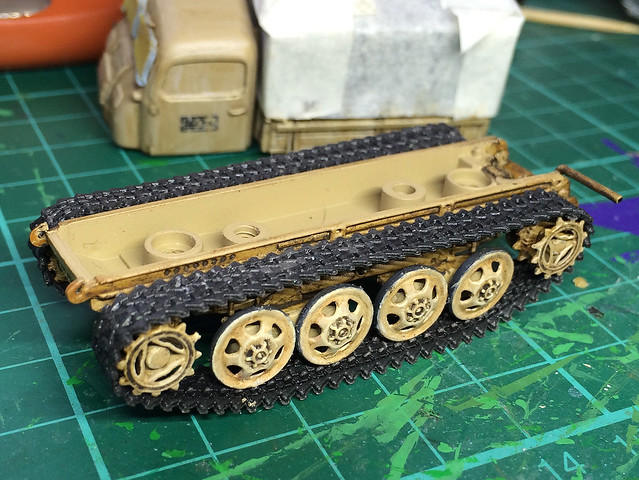 |
| I've put the tracks back in place to see how much I have to stretch them. They actually don't need to be stretched that much, but will it flake the paint? |
So, I began by spraying my 'elastic band' tracks with my usual black primer - cheap Hicote auto primer. I mounted the tracks on some make-shift supports and first sprayed the inside of the tracks and then the outsides...
I have to say that when I turned the flexible tracks inside-out between sprays I didn't experience any flaking of paint at this stage. So far so good, but what about when I spray on some normal acrylic paint?
For the next stage of the track painting I am using Vallejo's Model Air Metallic [71069] Rust...
And then, to give the track some depth, I tried out a light wash with some Sienna Ink (below, right). I'm probably going to play about a bit with different colours and shades of washes to see what effect they have and which brings out the detail best...
Having got the metallic, rusty base that I wanted it's now time to tone it down! I will be doing this with Vallejo's [powder] Pigments, notably 'Burnt Umber' and 'Green Earth', which give a dried mud and dust colour (the Burnt Umber also adding to the rust effect)...
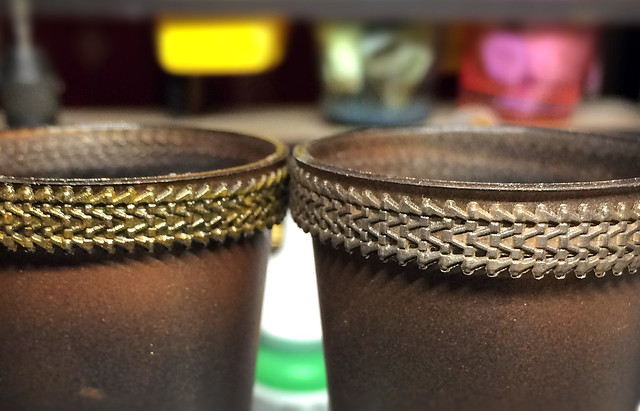 |
| On the left is the 'rusty' un-weathered track, on the right the pigment treated track. |
There are ways you can get around this, by adding a fixer medium to the pigments to begin with. But I wanted to experiment with a more dusty looking effect (so this may go wrong)...
Hooray! A couple of very light passes - at medium distance - with Humbrol Matt Varnish did no harm. The tracks have retained the dusty effect created with the pigments, but the pigment is now 'fixed'. There's still an underlaying metallic sheen which gives the impression that the rust is surface rust which is good. But there's not glint or 'sparkle' of bare metal, so that's next...
Graphite pencil - steel highlights
The final stage in this process is adding the steel 'glints' or accent to the tracks. Of course you don't have to add this IF you decide you want heavily rusted or muddy tracks I suppose.
My 'go to' tool for metallic highlighting is my 4B graphite pencil. It's a terrifically easy and effective technique, in this case I just gently run the pencil over the raised bits of the track and the edges...
I'd probably be tempted to finish this effect off with some small touches of silver acrylic here and there for those scratches which show the bare steel and for extra extra shinny highlights.
But that's it for tonight. I'm quite satisfied with that and the good news is that the paint doesn't appear to be flaking.
Next: Fitting the tracks and making the base.
Thursday 22 October 2015
1/72 Steyr RSO - Part 6
Weathering with oils
I'm starting to get a process with my vehicles, a series things that seem to work for me. Bleaching and staining with cheap oil paints is part of my weathering regime...
The bleached streaks are done by smudging spots of white oil paint and the greasy brown streaks are smudges of brown oil. Between oil colours I spray on a light coat of satin varnish to help protect the previous oil layers.
I've also started using the brown oil paint as a sort of wash - I did this on the chassis and underneath, it's a quick way to distress and shade areas that aren't 'on show'...
Pinwashing
While the use of cheap oil paints has made many of my (more expensive) AK Interactive Washes obsolete there is one item in AK's line that I don't think I could do without. That's their Dark Brown for Green Vehicles.
This is an enamel wash so it has pros and cons. Obviously it's a bit smelly, I suppose I've gotten a bit spoilt because of the availability of good quality acrylic paints these days (can't believe it was enamels or nothing when I was a kid). On the positive side it's because it's a oil-based paint that it works so well - in combination with a varnished surface - for pin-washing.
Next up - a spot of highlighting before the chipping and mud.
I'm starting to get a process with my vehicles, a series things that seem to work for me. Bleaching and staining with cheap oil paints is part of my weathering regime...
The bleached streaks are done by smudging spots of white oil paint and the greasy brown streaks are smudges of brown oil. Between oil colours I spray on a light coat of satin varnish to help protect the previous oil layers.
I've also started using the brown oil paint as a sort of wash - I did this on the chassis and underneath, it's a quick way to distress and shade areas that aren't 'on show'...
Pinwashing
While the use of cheap oil paints has made many of my (more expensive) AK Interactive Washes obsolete there is one item in AK's line that I don't think I could do without. That's their Dark Brown for Green Vehicles.
This is an enamel wash so it has pros and cons. Obviously it's a bit smelly, I suppose I've gotten a bit spoilt because of the availability of good quality acrylic paints these days (can't believe it was enamels or nothing when I was a kid). On the positive side it's because it's a oil-based paint that it works so well - in combination with a varnished surface - for pin-washing.
Next up - a spot of highlighting before the chipping and mud.
Monday 12 October 2015
What next? Steyr RSO
Now I'm fully back into the swing of my hobbies (and blogging about them) and the missus admits that it will be 'a while' before we can afford to do any more home improvement jobs I find I have a backlog of part built models to get through.
So, next up on the workbench is a nifty little conversion of the die-cast Altaya Steyr RSO tracked prime mover for my Finnish project. Here's where I left the model...
It looks like I've actually done the majority of the hardest work. I think it's onto the weather and chipping stage, so - in theory - this should be a nice short job.
...Yes, it's all coming back to me now - I wasn't looking forward to painting the 'elastic band' style vinyl tracks!
Link to all posts in the project series Altaya Steyr RSO Die-cast Conversion
So, next up on the workbench is a nifty little conversion of the die-cast Altaya Steyr RSO tracked prime mover for my Finnish project. Here's where I left the model...
It looks like I've actually done the majority of the hardest work. I think it's onto the weather and chipping stage, so - in theory - this should be a nice short job.
...Yes, it's all coming back to me now - I wasn't looking forward to painting the 'elastic band' style vinyl tracks!
Link to all posts in the project series Altaya Steyr RSO Die-cast Conversion
Sunday 11 October 2015
Quick '39 Chevy Truck Complete
Hooray! It's finished. It's a bit rough round the edges but I think that's probably normal for this sort of conversion (from a resin one-piece model).
Thursday 8 October 2015
Quick '39 Chevy Truck Part 9
Oooooo...Getting so close to finishing!
It's all about the minor jobs at this stage; touching up, checking for any mistakes, creating the headlamp 'glass', de-masking the windshields and then finally giving the model a last coat of matt varnish.
Next time you see this it should be the completion photographs. Hooray!
It's all about the minor jobs at this stage; touching up, checking for any mistakes, creating the headlamp 'glass', de-masking the windshields and then finally giving the model a last coat of matt varnish.
Next time you see this it should be the completion photographs. Hooray!
Tuesday 6 October 2015
Quick '39 Chevy Truck Part 8
(The whole 'Quick' thing is taking on a rather ironic twist now!)
Onto the tilt canvas. It's not one of my favourite parts of the original Valiant resin model as it's a bit shabby and rough, but I did't fancy remaking it.
After masking off the rest of the truck, I started with a couple of light airbrushed base layers light olives...
It's been my habit to work into my model canvas tilts using conte crayons and powders for tarpaulin type effect, but this time I thought I'd try something different. I got out my Vallejo Game Color Washes and started laying down thin washes of greens and sepias to emphasise the folds in the canvas...
Once I got the shadow areas done I then started picking out the highlights with conte pencil...
And then I used a soft brush (or a eye makeup foam stick) to blend back the highlight into the shadow areas...
And finally I picked out some of the deeper folds in the material with a darker wash and some inks...
Finally I gave the cover a coat of Humbrol Matt Varnish. Job done and I think the washes turned out not too bad, especially at a distance.
That sorted it's onto the model's base. I've shown my technique for doing this a few times now so I won't go through this again...
Well, that's nearly it. I just have to do some touching up here and there and I want to add a bit more mud to the truck itself before I give the model a final coat of matt varnish.
Onto the tilt canvas. It's not one of my favourite parts of the original Valiant resin model as it's a bit shabby and rough, but I did't fancy remaking it.
After masking off the rest of the truck, I started with a couple of light airbrushed base layers light olives...
It's been my habit to work into my model canvas tilts using conte crayons and powders for tarpaulin type effect, but this time I thought I'd try something different. I got out my Vallejo Game Color Washes and started laying down thin washes of greens and sepias to emphasise the folds in the canvas...
Once I got the shadow areas done I then started picking out the highlights with conte pencil...
And then I used a soft brush (or a eye makeup foam stick) to blend back the highlight into the shadow areas...
And finally I picked out some of the deeper folds in the material with a darker wash and some inks...
Finally I gave the cover a coat of Humbrol Matt Varnish. Job done and I think the washes turned out not too bad, especially at a distance.
That sorted it's onto the model's base. I've shown my technique for doing this a few times now so I won't go through this again...
Well, that's nearly it. I just have to do some touching up here and there and I want to add a bit more mud to the truck itself before I give the model a final coat of matt varnish.
Subscribe to:
Posts (Atom)

